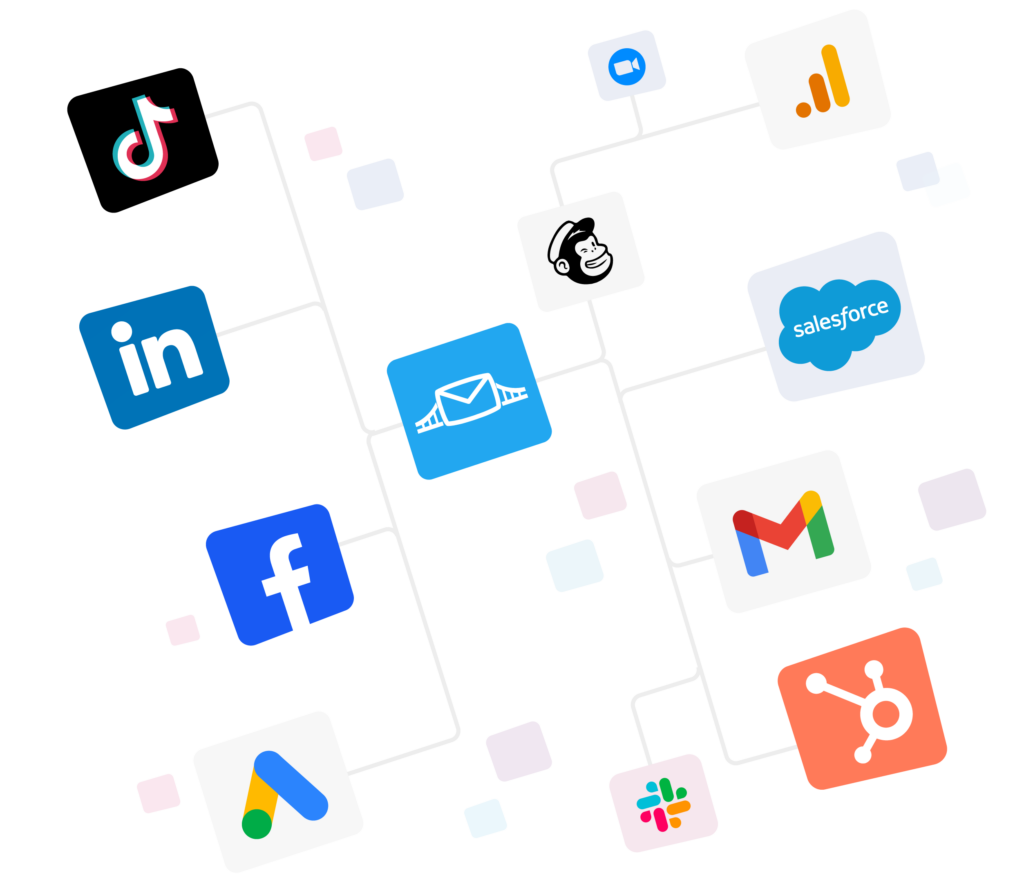
Marketplace users are browsing with their wallet half-open, so clicks convert better than an average news feed ad.
Besides that, Meta auto-targets people near your chosen location, so you don’t have to fiddle with a radius map.
To connect these dots, the platform’s pay-to-play access allows businesses to reach people who are already scrolling with the intent to buy.
Are you considering tapping into this massive potential by running Facebook Marketplace ads? In this article, we are going to cover all that you need to know and more.
That includes current Facebook Marketplace advertising best practices and tools that allow you to multiply your ads’ impact via automation, such as:
What Facebook Marketplace ads are
Facebook Marketplace ads are paid listings that pop up inside the Marketplace feed on the Facebook mobile app (and sometimes desktop).
They sit right beside the regular, free listings but carry a small “Sponsored” label so people know it’s an ad.
When someone taps, you can send them to your website, your Facebook Shop, Messenger, or the original Marketplace listing you boosted.
How much does it cost to advertise on Facebook Marketplace?
Listing locally is still free on Facebook Marketplace in 2025 with no upfront cost at all for pickup-only items.
Boosting a listing (turning it into a paid ad) starts at roughly $1 per day, so that you can test the waters without a big budget.
You can expect an average ad cost of about $0.68 per click or $8 per 1,000 views (CPM) this year.
If you offer shipping, Facebook keeps 10% of the sale price (minimum $0.80) as a selling fee, which is separate from any ad spend.
That said, small businesses usually thrive on $1–$5 a day per ad set, which works out to roughly $ 1,000–$ 5,000 a month if ads run continuously.
How to advertise on Facebook Marketplace
Start by signing in to your Facebook account. Then, navigate to Marketplace, either by tapping the grid button, scrolling down, or clicking Marketplace. You can also do this by clicking the Marketplace button directly.
While scrolling down the Marketplace page, you can see all the organic listings suggested by the platform, alongside a few sponsored ads.
The sponsored Facebook Marketplace ads are designed to target the right audience mostly based on location and the user’s previous interactions.
Here’s the step-by-step guide on how to place an ad on Facebook Marketplace:
1. Go to the Meta Ads Manager on the ad account you want to use to run your campaigns.
2. Select your Campaign Objective according to your ad’s target goal. This can create awareness, consideration, or conversion for your product.

In this example, select the “Leads” objective and click Continue. These configurations help display ads to people who are most likely to buy.
3. The next step is to set your campaign settings, and ad set targeting, much the same way as setting up any type of Facebook ads.

Once completed, scroll down to fill in the rest of the information, such as the budget options.

4. Select your Audience. You can use a new audience or an existing audience. Choose as appropriate.

5. On the ad set screen, find Placements by scrolling down. Meta now pre-selects Advantage+ placements by default and openly warns that restricting placements may raise costs.
Marketplace will not deliver ads by itself for some objectives, so you must leave at least one feed placement ticked. Once completed, click Next.

6. Here, ensure your Facebook page is selected first. Then, choose your ad creatives. Start by selecting the Ad formats: Single Image, Carousel, or Video.

Also, include a suitable headline, an appropriate product description, a click-worthy call-to-action for the ad, as well as the Media.

7. Create a message template. This is where you can encourage people to talk with you after they click on the ad. This allows you to start a conversation, generate leads, or define a custom experience for users who interact with your ad.
Templates only appear if the ad’s destination is Messenger/WhatsApp (for instance, a Click-to-Message lead ad). You won’t see this if your ad sends traffic to a website or a Facebook Shop.

8. Select the conversion tracking, i.e., the Facebook Pixel or app events.
While creating your ad, pay attention to the window screen on the right, where you can see what your ad will look like in the Marketplace placement vs. the newsfeed.
Click the three dots on the right and select Expand to further see how your ad will appear on the:
- mobile Marketplace feed,
- desktop Marketplace feed, and
- desktop Marketplace details page.
You can modify and edit your ad accordingly.
9. Click Publish. Your ads will be in the review, and Facebook will approve them if they meet the regulations. After that, people will see your ads as they browse the Marketplace.
Below is an example of a Facebook Marketplace ad.

How do I see my listings on Facebook Marketplace?
Once logged in, click on the Facebook logo at the top left of your Home Page or any other page.
Then, find and click on Marketplace. On the leftmost sidebar, you’ll find Selling tab (desktop) and Profile shortcut (mobile.
Click on it to see Your Listings.
Remember that managing your listings is an ongoing task and requires your attention, such as removing duplicate listings, adding new data, etc.
Editing your Facebook Marketplace ad
You might no longer be interested in running a campaign or wanting to make some modifications to your ad. Here’s how you can manage your Marketplace ads.
Modifying the details of the Facebook Marketplace ad
To edit a Marketplace listing for ads related to a single product, or multiple items, then:
- Go to the feed, and click on Marketplace.
- Find Selling in the left sidebar menu.
- Select Your Listing.
- Select the ad you’d like to edit.
- Click on Edit Ad.
- Edit the listing, and click Update once completed.
However, you can only modify available items and products that are not selling.
If your ad is waiting to be approved, an order related to the ad is pending, or the ad has generated labels or yielded a sale, it cannot be modified.
Also, there’s no need to edit your ad to ensure the number of items appears in a multi-item ad. The ad automatically displays the number of items available if there are fewer than 10 items.
Deleting Facebook Marketplace ads
Wondering, ‘how to delete my Marketplace ad?’ All you have to do is:
- Go to the feed, and click on Marketplace.
- Find Selling in the left sidebar menu.
- Select Your Listing.
- Select the ad you’d like to delete.
- Click on Delete. Then, you are shown another window. This is to ensure your ads don’t get deleted accidentally. Click Delete again to remove your ad permanently.
Learn more about how to advertise your business on Facebook Marketplace.
Best practices for successful advertising on Facebook Marketplace
When you treat Facebook Marketplace like any other pay-per-click channel, two things happen:
- Shoppers scroll past you because creative looks identical to free listings.
- Hot leads cool down while your team copies data from Messenger into the CRM.
The fix is using a mix of creative choices, delivery settings and, above all, automation.
The Meta ads best-practice bundle that you find below shows why each move works (the underlying mechanic) so you can repeat the wins again and again.
Use thumb-stopping photos & a price-first headline
Upload 3 – 5 square shots (1080 × 1080 px or better) and lead with the cleanest angle plus the price in both image and headline.
Here are the official spec requirements:

Also, always add category as well as keyword tags so Marketplace search can surface you for longer.
Let Advantage+ placements learn before you micro-manage
Create a Sales or Leads campaign and leave Advantage+ placements on for the first 5–7 days.
After the learning phase, get a placement breakdown. If Marketplace CPC is still ≤ 30% above Feed, it means that the learning phase is not complete and you still need to keep it running.
Meta’s delivery AI finds low-CPM pockets (often under $4) when it can roam across Feed, Reels and Marketplace. Turning placements off too early blocks bargain inventory.
Respond within five minutes
You’re more likely to qualify a lead if you answer within an hour, and 100 times more likely to connect within five minutes. Marketplace buyers are even less patient.
Switch listings or ads to Click-to-Message (Messenger or WhatsApp). Additionally, notify your sales reps instantly with an auto-assignment rule in your CRM.
You need specialized tools to do it for you in a streamlined way.
Alternatively, all LeadsBridge integrations offer this feature free of cost. Learn more about email receipt here.

Feed better signals with Conversions API
Pair your Pixel with Meta Conversions API so purchase or booking events travel server-side, including consent flags.
Use the extra data columns (value, content ID, currency) to let Meta bid toward a lower CPA. Meta’s API restores events lost to browser blocks and keeps you on the right side of GDPR/CCPA.
Needless to say, you need to automatically connect your data stack to Meta to feed enough data to the algorithm. You can easily do this via an automated data bridge.
Keep inventory and creative fresh
Archive sold or duplicate listings weekly; swap hero images every 10-14 days to reset ad fatigue. A tight catalogue keeps relevance scores up and CPM down.
Implement automation
LeadsBridge sits between Marketplace and 390+ CRMs, spreadsheets and email tools so every new lead hits the right pipeline instantly. It offers:
- Lightning-fast lead data transfer: Marketplace inquiries flow into your CRM the instant they come in.
- Workflow-ready integrations: Industry-specific connectors drop leads straight into the tools your reps already use.
- Always-on audience growth: Buyer data auto-syncs to custom audiences and lookalikes, launching cross-sell and repurchase campaigns.
- No manual upkeep or CSV imports and exports: Besides accuracy, automated data management is highly efficient and resource-friendly.
- Set-and-forget reliability: Easy setup plus partner-level API access eliminates manual upkeep, lightens your ops workload, and virtually eliminates data-loss risk.
Final takeaways
Facebook Marketplace ads are, without a doubt, high-performing.
However, start small, test creative weekly, and measure placement-level results; then scale only what hits your target CPA.
LeadsBridge makes that cycle painless so you spend time optimizing offers, instead of tackling spreadsheets or integrations.
Want to future-proof your advertising? Set up your automated data technology stack using Facebook Marketplace integrations here.



















